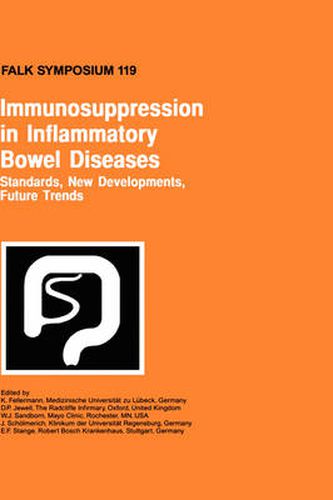Readings Newsletter
Become a Readings Member to make your shopping experience even easier.
Sign in or sign up for free!
You’re not far away from qualifying for FREE standard shipping within Australia
You’ve qualified for FREE standard shipping within Australia
The cart is loading…






This title is printed to order. This book may have been self-published. If so, we cannot guarantee the quality of the content. In the main most books will have gone through the editing process however some may not. We therefore suggest that you be aware of this before ordering this book. If in doubt check either the author or publisher’s details as we are unable to accept any returns unless they are faulty. Please contact us if you have any questions.
The aetiology of the chronic inflammatory bowel diseases – Crohn’s disease and ulcerative colitis – is still enigmatic. The therapeutic approach has therefore traditionally focused on anti-inflammatory principles, including corticosteroids and aminosalicylates. Since a significant proportion of patients is steroid-dependent or refractory and because of the problematic side-effects of long-term systemic steroids, active immunosuppression has gained acceptance in the field. The classical immunosuppressants azathioprine and 6-mercaptopurine have long been evidence-based in IBD, but underused. Recently, methotrexate and cyclosporine have also been proven to be effective in certain situations. Newer drugs like tacrolimus, mycophenolate and others may be similarly useful but their potential is still unclear. Finally, the immune modifiers including IL-10 and TNF-antibodies have been successfully subjected to controlled trials. Other experimental drugs discussed in this book are on the horizon. This volume is the Proceedings of Falk Symposium 119 held in Freiburg-im-Breisgau, Germany, October 3–4, 2000, and covers systematically the field of immunosuppression in inflammatory bowel diseases. It is hoped that it will further the prudent use of these drugs in the proper clinical situations by increasing our understanding of both the mechanisms of action and the clinical benefit to the patient.
$9.00 standard shipping within Australia
FREE standard shipping within Australia for orders over $100.00
Express & International shipping calculated at checkout
Stock availability can be subject to change without notice. We recommend calling the shop or contacting our online team to check availability of low stock items. Please see our Shopping Online page for more details.
This title is printed to order. This book may have been self-published. If so, we cannot guarantee the quality of the content. In the main most books will have gone through the editing process however some may not. We therefore suggest that you be aware of this before ordering this book. If in doubt check either the author or publisher’s details as we are unable to accept any returns unless they are faulty. Please contact us if you have any questions.
The aetiology of the chronic inflammatory bowel diseases – Crohn’s disease and ulcerative colitis – is still enigmatic. The therapeutic approach has therefore traditionally focused on anti-inflammatory principles, including corticosteroids and aminosalicylates. Since a significant proportion of patients is steroid-dependent or refractory and because of the problematic side-effects of long-term systemic steroids, active immunosuppression has gained acceptance in the field. The classical immunosuppressants azathioprine and 6-mercaptopurine have long been evidence-based in IBD, but underused. Recently, methotrexate and cyclosporine have also been proven to be effective in certain situations. Newer drugs like tacrolimus, mycophenolate and others may be similarly useful but their potential is still unclear. Finally, the immune modifiers including IL-10 and TNF-antibodies have been successfully subjected to controlled trials. Other experimental drugs discussed in this book are on the horizon. This volume is the Proceedings of Falk Symposium 119 held in Freiburg-im-Breisgau, Germany, October 3–4, 2000, and covers systematically the field of immunosuppression in inflammatory bowel diseases. It is hoped that it will further the prudent use of these drugs in the proper clinical situations by increasing our understanding of both the mechanisms of action and the clinical benefit to the patient.